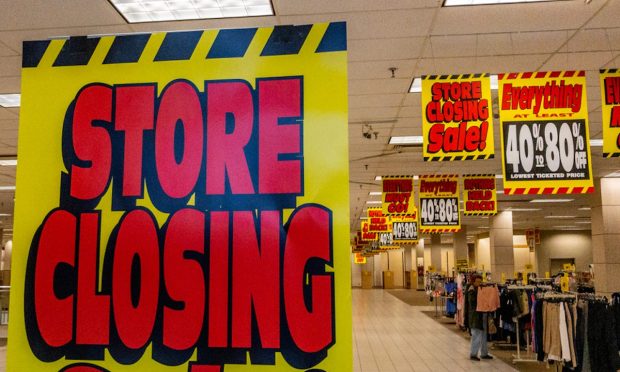As Sears Cuts Its Illinois Roots, A New Generation of Super-Retailers Watches — And Waits

Kenmore. DieHard. Craftsman. Discover Card. Allstate Insurance. This collection of iconic, if somewhat disparate, brands all share a common ancestor.
These (and more) were created by a certified American business pioneer: Sears.
With a deep sense of nostalgia, we now mark the closing of the last Sears store in the state where it all began: Illinois. As digital transformation remakes the retail map, there’s something oddly appropriate about Sears’ current owner, Transform SR Brands LLC, or Transformco for short.
Transformco just announced plans to shutter its last Illinois Sears store, located in the Woodfield Mall just about 50 miles from where Founder Richard Sears and partners first opened shop back in 1893. As CNBC reported on Thursday (Sept. 16), the Woodfield Mall store will go dark on Nov. 14, leaving Sears with no presence where it all began a century ago.
Still operating are a handful of Sears and Kmart locations throughout the U.S., as well as Sears.com, Transformco’s ShopYourWay.com site (a “social shopping destination” and rewards program), as well as the leading product repair provider, Sears Home Services.
Sears’ retail troubles are by no means breaking news. As Business Insider observed, “Sears was once the world’s largest retailer, reporting billions of dollars in profits. With a headquarters located in the Sears Tower, once the tallest building in the world.” Not long ago, one could find a copy of the Sears catalog in a preponderance of U.S. households. Talk about ubiquity.
But after a series of strategic missteps and the invention of a thing we like to call the internet, all of that changed, and Sears declared bankruptcy in 2018. It’s looked like a fait accompli ever since.
Right now, Sears’ history is perhaps more interesting than its future. Inheritors like Amazon and Walmart may be able to take lessons from the fate of an absolute original of American retail.
See also: Sears to Close Final Store in Home State of Illinois
Seared Into Payments History
From a payments perspective, talking about Sears is a stroll down financial memory lane.
If the name Dean Witter Reynolds sounds familiar, that makes sense. At one time the biggest retail brokerage on Wall Street, Sears acquired the operation in 1981 as part of the grand plan for the Sears Financial Services Network, which at one time also included Coldwell Banker real estate.
In what some saw as the company straying from its sweet spot in mixed-merchandise department stores, Sears then launched The Discover Card in 1986. That foresighted financial instrument was the first among credit cards to offer cash rewards and no annual fees.
Sears’ foray into finance was not to last, however — in 1993, the Dean Witter, Discover & Co. unit merged with Morgan Stanley, and today is giant Discover Financial Services.
Today, there’s nothing unusual about retail giants issuing branded credit cards. Personal finance firm NerdWallet recently compared the relative strengths of the Walmart Rewards Mastercard versus rivals — namely the Amazon Prime Rewards Visa Signature Card. Business is booming.
Too bad Sears didn’t make the great digital shift. We might be looking at a considerably different retail and payments landscape had it been equipped differently.
Learning from the Past at Digital Speed
Fast-forward to how things are now, and the same market dynamics are still at work.
A recent PYMNTS article headlined “Amazon’s Department Store Plans May Be Death Knell for Walmart’s Retail Lead” sounds ominous. Does the Sears story have any bearing? Perhaps.
See also: Amazon’s Department Store Plans May Be Death Knell For Walmart’s Retail Lead
As the article noted: “In each category where Amazon has taken the lead from Walmart, it has done so by slowly and steadily chipping away at Walmart’s lead with its ever-growing digital business.” It sounds eerily like analysts recalling the big force that really took down Sears: Walmart.
Hedge fund manager Edward Lampert bought Sears, then Kmart, looking for a magic bullet to compete with Walmart as its big-box concept captured the imagination of U.S. consumers, much as the internet and Amazon’s online marketplace have done today.
Is there a lesson? We’ll let you decide, as we mourn the loss of Illinois’ last Sears store.
